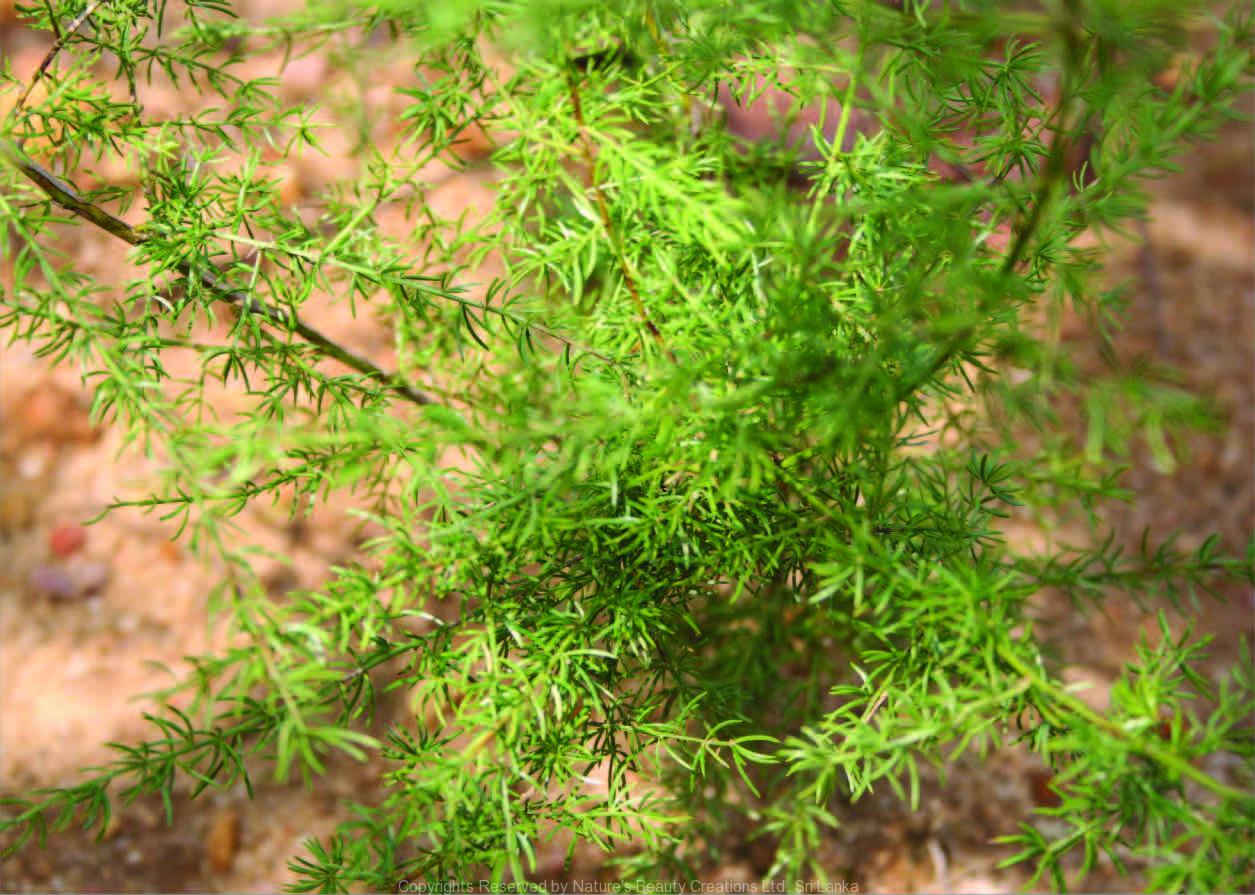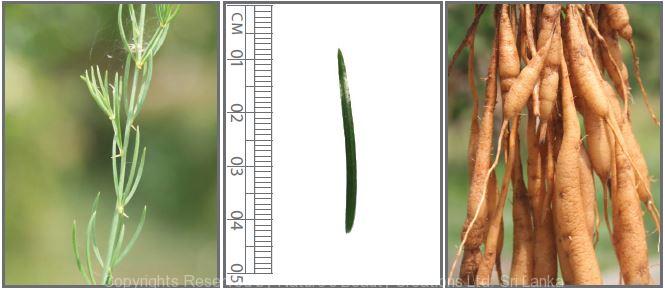

Traditional Knowledge
Useful plant parts :
Tuber and cladode
Uses in traditional medicine :
- Medicated oil prepared with tuberous roots is used in chronic rheumatism and bilious
- Cladodes are boiled and applied on boils and swellings
- Drink prepared with tuberous roots increase sexual vigour, cures infertility in women, and acts as a refrigerant, demulcent, diuretic, aphrodisiac, alterative, antidiarrheic and antidysenteric
Scientific Research
Chemical constituents:
Phenanthrene derivatives: racemosol, furostanol, steroidal saponin: shatavaroside C, shatavarin I-IV, racemosides A–C, diphenylpentendiol: shatavarol, β-sitosterol, stigmasterol and ursolic acid from roots and fruits
Bioactivity :
Alcohol extract of roots: antidepressant, antistress, antihyperglycaemic, antioxidative, hepatoprotective; aqueous fraction of the crude extract: antioxidative; shatavarin rich fraction: anticancer
Clinical:
Powdered roots exhibit positive results for dyspepsia by reducing gastric emptying time; Ingrediant of herbal/herbo-mineral drugs used for treatment of peptic ulcer
References : Acharya, S. R. et al., (2012), Antioxidant and hepatoprotective action of Asparagus racemosus Willd. root extracts, Indian J Exp Biol, 50(11), 795-801. Dalvi, S. S. et al., (1990), Effect of Asparagus racemosus (Shatavari) on gastric emptying time in normal healthy volunteers, Journal of Postgraduate Medicine, 36(2), 91-4. Goel, R. K. and Sairam, K., (2002), Anti-ulcer drugs from indigenous sources with emphasis on Musa sapientum,Tamrabhasma, Asparagus racemosus and Zingiber officinale, Indian Journal of Pharmacology, 34, 100-110. Hannan, J. M. et al., (2011), Antihyperglycaemic activity of Asparagus racemosus roots is partly mediated by inhibition of carbohydrate digestion and absorption, and enhancement of cellular insulin action, Br J Nutr. Joshi, T. et al., (2012), Antistress activity of ethanolic extract of Aspara- gus racemosus Willd roots in mice, Indian J Exp Biol, 50(6), 419-24. Kamat, J. P. et al., (2000), Antioxidant properties of Asparagus racemo- sus against damage induced by radiation in rat liver mitochondria, Journal of Ethnopharmacology, 71(3), 425-435. Mandal, D. et al., (2006), Steroidal saponins from the fruits of Asparagus racemosus, phytochemistry, 67(13), 1316-1321. Mitra, S. K. et al., (2012),Shatavarins (containing Shatavarin IV) with anticancer activity from the roots of Asparagus racemosus, Indian J Pharmacol, 44(6), 732-6. Negi, J. S. et al., (2010), Chemical constituents of Asparagus, Pharma- cogn Rev, 4(8), 215-220. Sekine, T. et al., (1997), A 9,10-dihydrophenanthrene from Asparagus racemosus, phytochemistry, 44(4), 763-764. Sharma, U. et al., (2012), Furostanol saponin and diphenylpentendiol from the roots of Asparagus racemosus, Nat Prod Commun, 7(8), 995-8. Singh, G. K. et al., (2009), Antidepressant activity of Asparagus racemo- sus in rodent models, Pharmacology Biochemistry and Behavior, 91(3), 283-290.
Copyrights Reserved By
Natures Beauty Creations




